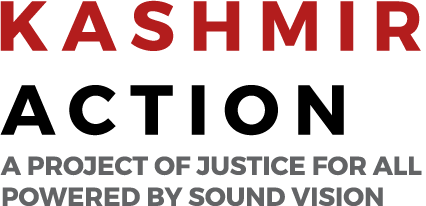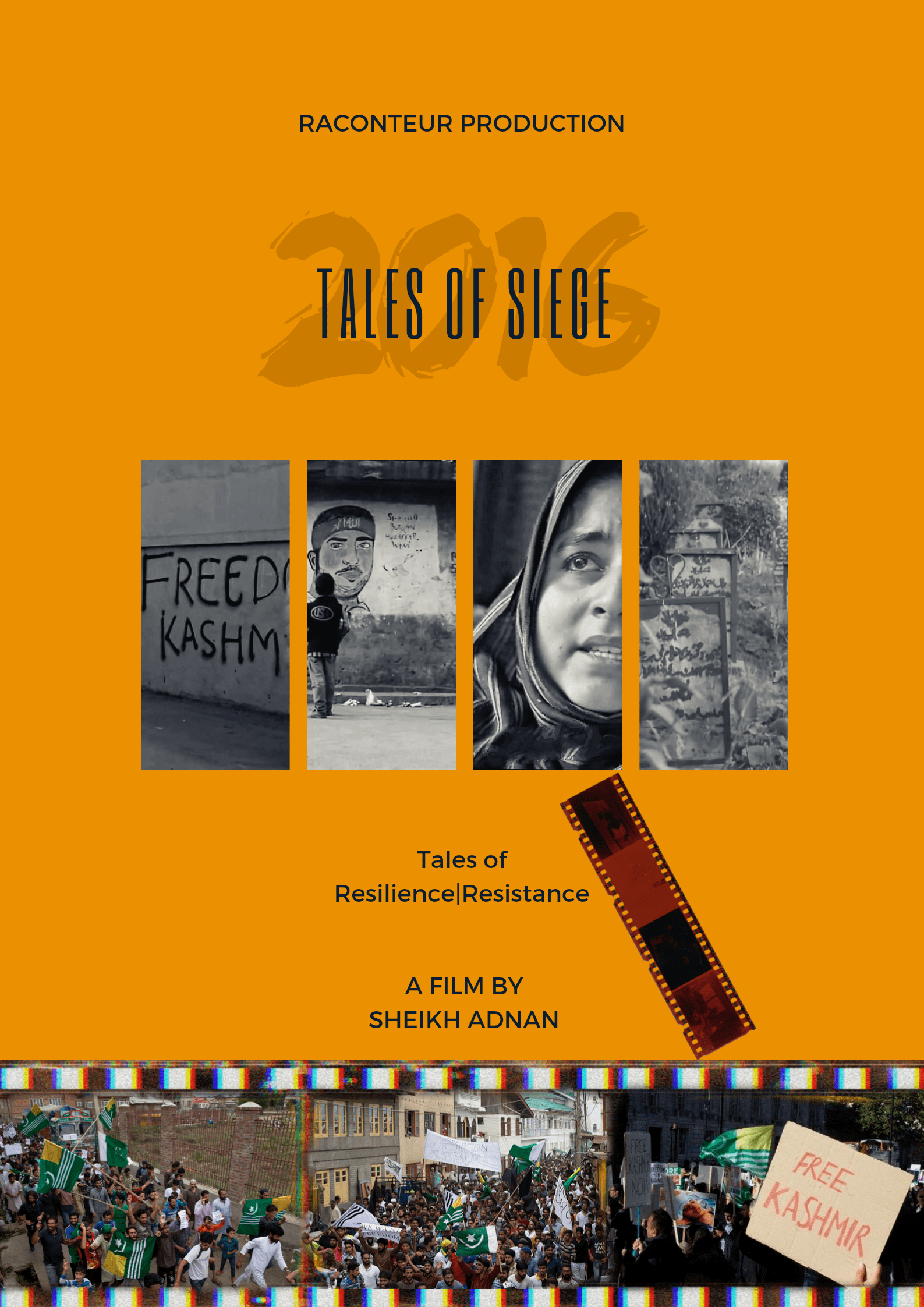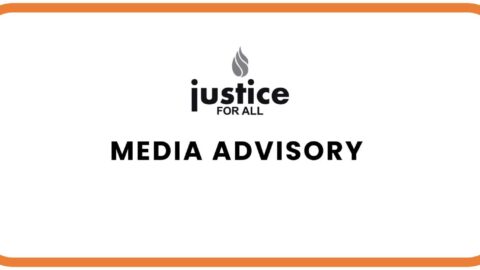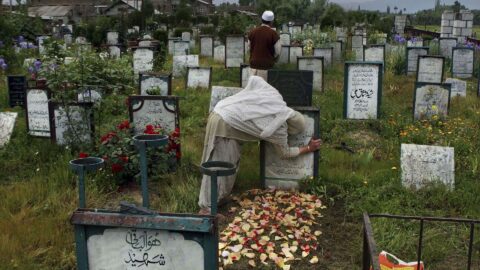November 13, 2025 Justice For All condemns the systematic campaign of collective punishment targeting Muslim…
Tales of Siege: Screening & Discussion Guide
This Tales of Siege screening and discussion guide is intended to cover the necessary steps involved in planning an effective virtual screening, provide additional strategies to enhance the success of the event and prepare resources to execute screenings.
Tales of Siege is a project of 5 journalism students of the Media Education Research Centre, Kashmir University, including Saher Iqbal and Muneem Farooq. It is directed by Sheikh Adnan and Furqan Khurshid. Tales of Siege narrates how the continuous state-imposed curfew and strike by separatists has played out in the Valley. The film is described as a movie about the “resilience and survival of people of Kashmir” in the first 120 days of the unrest in 2016.
Define Objectives for the Screening
Knowing precisely what you hope to achieve from your film screening will have a significant bearing on numerous aspects of the planning process, including the contents of the agenda. A virtual town hall-style screening format is well suited to raise awareness about Kashmir and solicit feedback on actions. While raising awareness about the siege in Kashmir is a valuable goal in itself, organizers can maximize the value by expanding the scope of the agenda. #FreeKashmir
As a result of these discussions on the issues the siege in Kashmir, how can your screening create a springboard for advancing advocacy efforts that may lead to meaningful changes?
Attendees will become advocates, actively supporting the call for student groups, activists, mosque/church/temple interfaith leadership, media, local policy makers, national leadership, even the United Nations to study the issue and develop recommendations and implement them. This increases the pool of people working on the issue fo Kashmir.
You will need a virtual platform to screen the movie ie Zoom, Google Meet, GotoMeeting, WebEx. If you need help with this aspect and need a secure platform do reach out to maria@justiceforall.org and we can make arrangements.
Sample Run of Show
With your objective in mind and an understanding of the resources you have, you can develop a preliminary agenda, which will help guide a number of subsequent decisions in the planning process. As mentioned earlier, developing a two-part agenda that focuses both on the substance of the issue and potential ways to address the issue is an effective way to achieve the dual objectives of raising awareness and advancing your advocacy efforts.
- Film introduction and explanation of agenda to attendees – a brief outline of the issue, its causes and urgency. (Best to have. Kashmiri moderate this segment)
- Film screening
- Panel/Town Hall discussion – An advocate on Kashmiri cause, a scholar outlines current/past efforts to address the issue. Panelists can provide their perspectives on these efforts and impediments to action, Audience input/questions on current efforts and suggestions for
next step (reach out to maria@justiceforall.org if you need speakers) - Recap and conclusion – Moderator leads interaction with panelists to find consensus on next steps
Concluding Activities:
- Create mailing list for all attendees
- Send a copy of the mailing list to Justice For All for inclusion in the international campaign (info@justiceforall.org)
- Create subcommittees of guests interested in pursuing specific tasks post-screening
- Assign note-taker to compile information on subcommittees and agreed-upon action steps to coordinate outreach efforts
- Plan and schedule future meetings
- Provide all relevant social media information to attendants for future use
- More action steps for participants can be found at www.freekashmir.org/actions
Discussion questions
- What are your first thoughts after watching Tales of Siege? (Did a particular scene stand out?)
- What signs of oppression, militarization and occupation can you recollect from this short film?
- This was in 2016, what do you imagine life to be like post COVID and under lockdown after the abrogation of Article 360.
- In which ways are the people of Kashmir resisting occupation?
- After viewing the film how do you think the Indian media frames Kashmir?
- What message should we communicate to people about the Kashmir Issue after watching it?
- What have you learned from this documentary?
- How can we effectively advocate for Kashmiris living under siege?
Further Points of Discussion
- How the police denies statements regarding the killings?
- How difficult was it for the filmmakers to coordinate and produce the content under a total communication blackout?
- Transport operators: Over the past 4 years, they’ve suffered from the worst of trials. Given that they are now being forced to sell their buses to junk dealers.
- The surveillance: how filmmakers/journalists are harassed and persecuted while working.
- Discuss how people religiously follow the resistance camp – daily lives of Kashmiris (how they close and open their shops, chores according to the resistance calendar)
- Establishment of community schools, charity houses as a paradigm of resistance.



